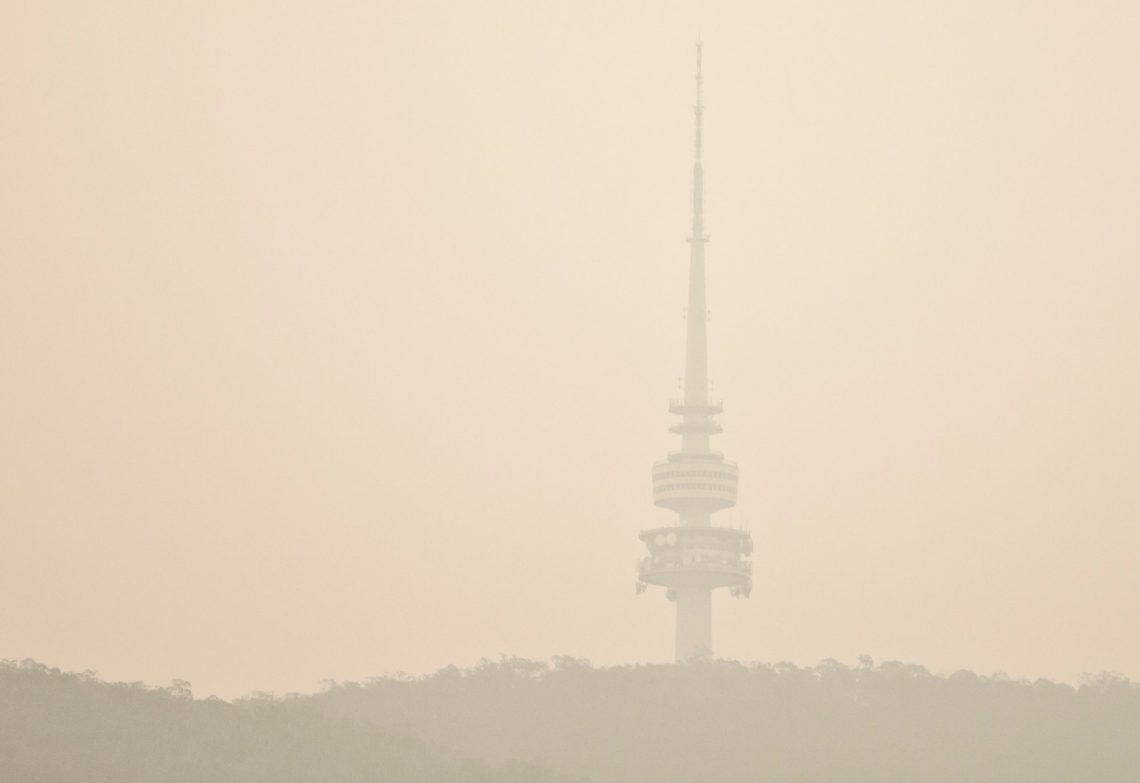A breakthrough study by Monash University researchers shows mobile phone signals could be used to measure the concentration of bushfire smoke smothering towns and cities.
The research team, lead by Dr Adrien Guyot from the university’s Department of Civil Engineering, analysed signal fluctuations during the 2019-2020 bushfire season that left large parts of the country shrouded in smoke.
They realised these fluctuations produced unique signal patterns depending on the concentration of smoke.
The technology is currently in its infancy, but Guyot said future iterations of the research could help us to better understand smoke dispersion models and possibly create an early warning system to protect people from smoke inhalation.
Seizing an opportunity
Guyot and his team didn’t set out to make the breakthrough. They were actually looking into the use of mobile phone signals to monitor rainfall, with the research due to wrap up at the end of 2019, just as the country experienced one of the worst bushfire seasons in history.
“Driven by curiosity, we looked at our mobile phone dataset for that period, to see if the signal strength would be affected by smoke,” Guyot told create.
“The maximas and minimas over 15-minute periods showed large fluctuations. We were shocked and decided to explore this further.”
The team monitored routine communications between backhaul towers, which are large antennae mounted on towers and buildings. While the smoke doesn’t directly interact with mobile phone signals, the researchers noticed that the way smoke modifies the air index refractivity does have an impact on commercial microwave links.
“When smoke particles are present in the atmosphere, they modify the temperature and humidity of the layers they are in and modify the air index refraction of these layers,” Guyot said.
“The presence of layers with varying degrees of refractivity create what we call ‘anomalous propagation conditions’ for radio-frequencies.”
These anomalous propagation conditions cause the large fluctuations in the signals received by the backhaul towers.
“We [also] found a relationship between the magnitude of the fluctuations and the smoke concentrations, as measured by conventional in-situ observations,” he said.
Helping rural Australians
Australians are intimately aware of the impacts of bushfires on lives and property, so it’s no surprise that some of the country’s best and brightest minds are finding innovative ways to monitor and combat them.
From developing virtual reality and haptic technology to train firefighters, to building user-friendly water tanks to fit underneath military helicopters, engineers are creating technology that could help fight fires faster and more efficiently.
As mobile phone towers are common throughout across Australia, Guyot hopes his team’s discovery could be used to better service areas without air quality monitoring stations and create more accurate warning systems.
Most monitoring stations that measure particulate matter tend to be in urban areas, where they can test air quality changes due to high levels of traffic. This means measuring particulate matter in rural and remote areas — often the places most impacted by bushfire smoke — can be difficult.
“With mobile phone signals, we can obtain unique information on propagation conditions. This can give us an estimate of the presence of layers of smoke, and indication of their spatial extent and depth. There are currently no such observations, so this data is extremely valuable,” Guyot said.
“I see this more as complementary to existing observations and models than a stand-alone observation. These complementary observations could help improve smoke dispersion models, as an additional input to models already ingesting in-situ observations and satellite observations.”
Collaboration near and far
Guyot and his team worked in collaboration with the Australian Bureau of Meteorology’s Radar Science and Nowcasting group. According to Guyot, the BOM is investigating how innovative techniques such as this could be incorporated into operational predictive capabilities in the future.
They were further supported by researchers from Delft University of Technology and Wageningen University in the Netherlands.
“The researchers from these institutions were the pioneers proposing to use mobile phone signals for application in precipitation estimation and hydrology,” Guyot said.
“Their expertise in weather radar and anomalous propagation was invaluable in the analysis of the mobile phone signals in relation to smoke.”
The team’s research was published in AGU Advancing Earth and Space Science in March.
Learn how Australian engineers are developing a way to extinguish bushfires within an hour.



